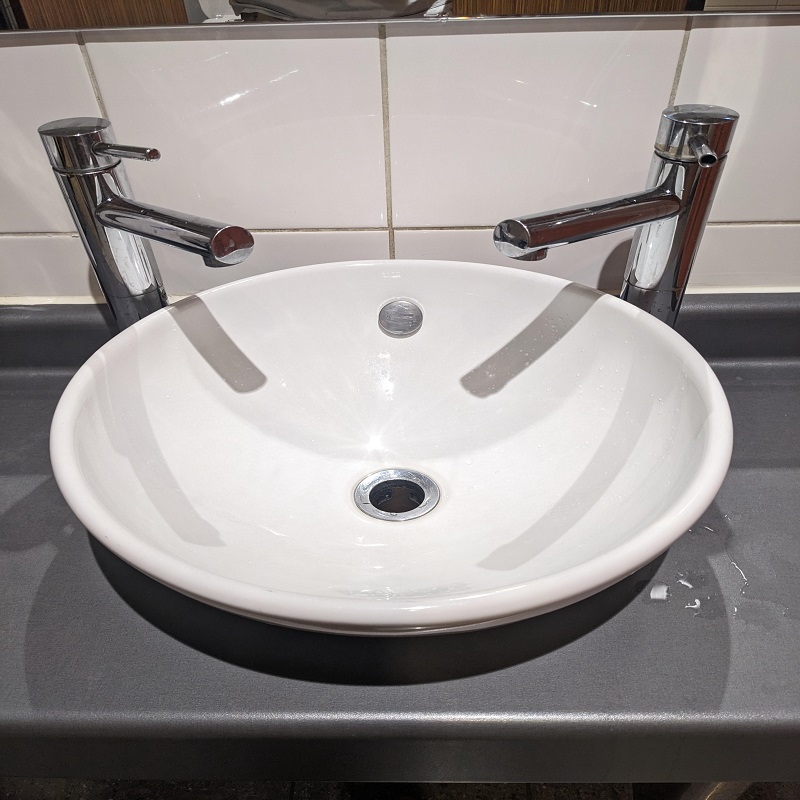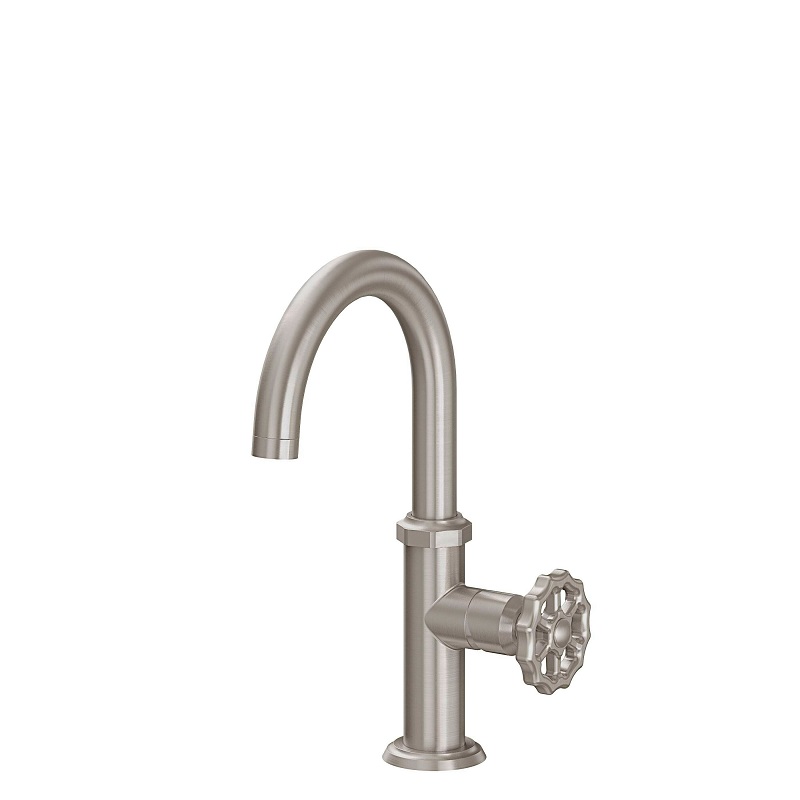How do faucets work? Faucets play a crucial role in our daily lives, providing us with access to clean water for various activities such as washing our hands, cooking, and cleaning. But have you ever stopped to think about how faucets actually work? In this article, we will explore the inner workings of faucets, from the basic components to the mechanisms that allow us to control the flow of water.

Basic Components of a Faucet
Before we delve into the mechanics of how faucets work, let’s first take a look at the basic components that make up a typical faucet. The main parts of a bathroom faucets include the spout, handles, aerator, cartridge or valve, and plumbing connections. The spout is the part of the faucet where the water comes out, while the handles are use to control the flow and temperature of the water. The aerator is a small attachment at the end of the spout that helps to regulate the flow of water and reduce splashing. The cartridge or valve is the mechanism inside the faucet that controls the flow and temperature of the water, and the plumbing connections are use to connect the faucet to the water supply.
How Faucets Work
There are two main types of faucets: compression faucets and non-compression faucets. Compression faucets are the traditional type of faucet, while non-compression faucets use different mechanisms to control the flow of water. Let’s start by examining how compression faucets work.
Compression Faucets
Compression faucets have been around for a long time and are commonly found in older homes. The basic principle behind how they work is quite simple. When the handle of a compression faucet is turn, it raises or lowers a stem that is connecte to a rubber washer at the base of the faucet. When the handle is turn off, the washer presses against the opening of the water pipe, blocking the flow of water.
Non-Compression Faucets
Non-compression faucets use different mechanisms to control the flow of water. One common type of non-compression faucet is the ball faucet, which uses a ball-shape knob to control the flow and temperature of the water. When the handle of a ball faucet is turn, it moves the ball inside the faucet, which in turn controls the flow of water. Another type of non-compression faucet is the cartridge faucet, which uses a cartridge instead of a rubber washer to control the flow and temperature of the water.
Temperature Control
In addition to controlling the flow of water, faucets also allow us to adjust the temperature of the water. Most faucets have separate handles for hot and cold water, which are connecte to the hot and cold water supply lines. When the handles are turned, they open and close the valves that control the flow of hot and cold water, allowing us to adjust the temperature of the water coming out of the shower faucets.
How to choose the right faucets
Faucets play a crucial role in our daily lives. They are essential for providing water for various household activities, such as washing dishes, cooking, and personal hygiene. With so many options available on the market, choosing the right faucets for your home can be a daunting task. From different styles and finishes to various features and functionalities, there are many factors to consider when selecting the perfect faucets.

Understanding Your Needs
The first step in choosing the right faucets for your home is to understand your needs. Consider the specific requirements of each room where faucets are need. For example, a kitchen faucet may need to be larger and more durable to accommodate washing large pots and pans, while a bathroom faucet may require a more elegant and stylish design. Additionally, consider the number of holes available in the sink or counter where the faucet will be install, as this will determine the type of faucet that can be use.
Style and Finish
Once you have assessed your needs, consider the style and finish of the faucets. There are various styles to choose from, including traditional, contemporary, and transitional designs. Traditional faucets often feature classic details and a timeless appeal, while contemporary faucets are sleek and modern. Transitional faucets combine elements of both traditional and contemporary designs, offering a versatile and adaptable option. Additionally, consider the finish of the faucets, such as chrome, stainless steel, brushed nickel, bronze, or brass. The finish should complement the overall style of the room and other fixtures, such as cabinet hardware and lighting.
Functionality
In addition to style and finish, consider the functionality of the bathtub faucets. Look for features that will enhance the usability and convenience of the faucets, such as a pull-down or pull-out spray head for kitchen faucets, touchless operation for hands-free convenience, or a high-arc design for added clearance and ease of use. Additionally, consider the water flow and temperature control options, as well as any additional features, such as a built-in water filter or a soap dispenser.
Quality and Durability
When choosing faucets for your home, it is essential to prioritize quality and durability. Look for faucets made from high-quality materials, such as solid brass or stainless steel, which are corrosion-resistant and long-lasting. Additionally, consider the construction of the faucets and the reliability of the manufacturer. A reputable brand with a history of producing reliable and durable faucets is more likely to provide a high-quality product that will stand the test of time.
Advantages of faucets
Faucets are an essential fixture in any household, providing a convenient way to access water for various tasks such as washing, cooking, and drinking. While they may seem like a simple and mundane part of our daily lives, the benefits of faucets extend far beyond the convenience they provide.

Convenience and Accessibility
One of the most obvious benefits of faucets is the convenience they offer. With just a twist of a handle or a push of a button, water can be easily accessed for a wide range of purposes. Whether it’s filling up a glass of water, rinsing off dishes, or taking a refreshing shower, faucets make it effortless to obtain the water we need. This accessibility is especially important for individuals with limited mobility or disabilities, as faucets provide a simple and efficient way to access water without the need for physical exertion.
Water Conservation
Faucets have play a crucial role in promoting water conservation. Many modern faucets are design with water-saving features. Such as low-flow aerators and sensor technology, which help reduce water usage without sacrificing performance. By using these water-efficient faucets. Households can significantly decrease their water consumption and lessen their impact on the environment. Furthermore, the convenience of faucets encourages people to use water more thoughtfully. Avoiding unnecessary waste and promoting sustainable practices.
Improved Hygiene
Proper handwashing is a key element of maintaining good hygiene and preventing the spread of illness. Faucets play a crucial role in this process. Providing a clean and reliable source of water for handwashing and other personal hygiene practices. With the integration of touchless and sensor-operated faucets. The risk of cross-contamination from frequently touch surfaces is minimized. Further promoting hygiene and sanitation. In public spaces such as restrooms and commercial kitchens. The use of faucets with hygienic features helps maintain a safe and healthy environment for everyone.
Conclusion
Faucets may seem like simple devices, but they are actually quite complex when you consider all the components. And mechanisms that work together to allow us to access clean water. From the basic components of a faucet to the inner workings of compression and non-compression faucets. There is a lot to learn about how faucets work. The next time you turn on a faucet. Take a moment to appreciate the engineering that goes into making it all happen.

